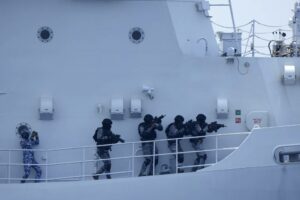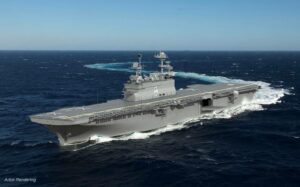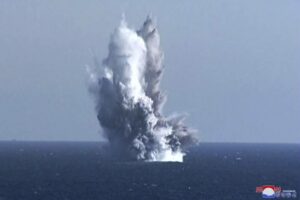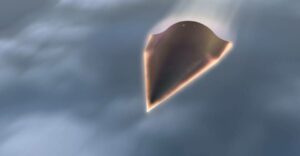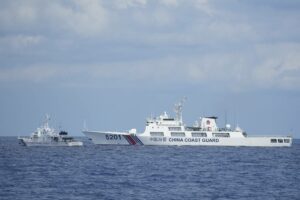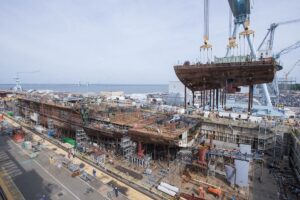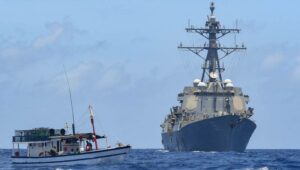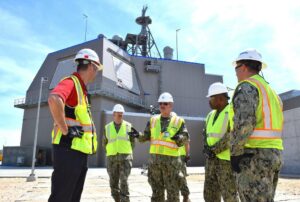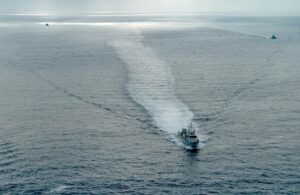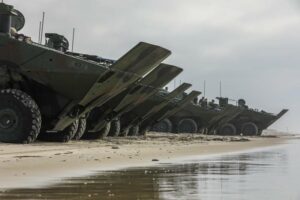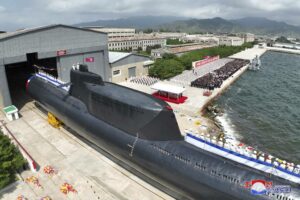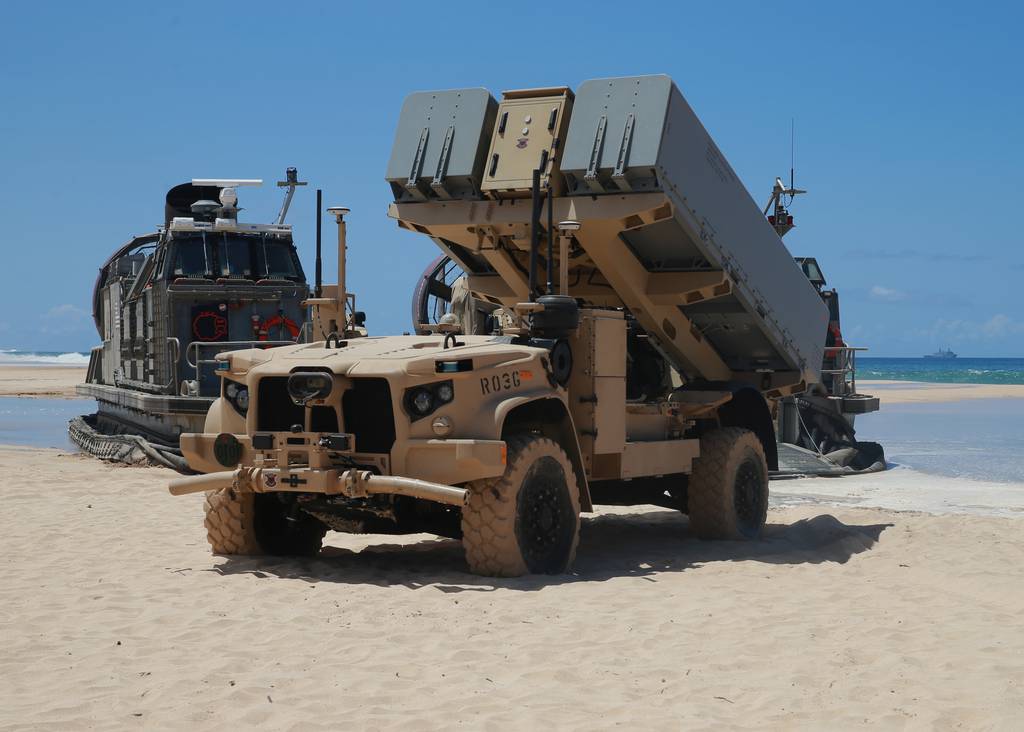
WASHINGTON — The presumed future commandant of the U.S. Marine Corps wants to accelerate the service’s implementation of its Force Design 2030 modernization effort.
Indeed, acceleration was the prevailing theme at this week’s Modern Day Marine conference, with leaders discussing ways to push the boundaries of defense funds, the federal acquisition process and relationships with industry to overhaul the force as quickly as possible. The effort is part of a move to deter China from starting a fight, but would also help the U.S. enter any battle with a decisive advantage, they say.
“I am incredibly proud to tell you today that we are well ahead of where we thought was even possible back in 2019,” Commandant of the Marine Corps Gen. David Berger told the crowd June 27, referring to the year he was sworn in as commandant and started planning the generational change.
But, he said, “we need to be ahead of our competitors, we need to be ahead of where we are right now.”
Berger will relinquish command of the Corps on July 10, and current Assistant Commandant Gen. Eric Smith will take over as acting commandant. The Biden administration nominated Smith to serve as the next service chief, but lawmakers have not yet confirmed him for the position due to a hold on all military nominations.
“Force Design is on track. We need to accelerate those areas where we can,” Smith said during his hearing with the Senate Armed Services Committee.
If given a larger budget, Smith added, “I’m committed to putting that to things that we are already doing: accelerating being more lethal, accelerating being even more ready … because we don’t know when the fight starts.”
The commands he’ll lead say they heard the message loud and clear.
“I think Gen. Eric Smith is going to come in and we’re going to really press the accelerator,” Lt. Gen. Karsten Heckl, the deputy commandant for combat development and integration, said in a June 28 panel discussion.
He told Defense News afterward that he wants to accelerate the development and fielding of sensors and weapons that can find, track and kill enemy targets; surface connectors and other means of transporting Marines and supplies in and around the Pacific theater; and advances in logistics and sustainment.
Lt. Gen. Christopher Mahoney, the deputy commandant for programs and resources, told Defense News he and his team are doing what they can on the money side.
“Just about every program that is directly associated with the leading edge of Force Design, we are trying to — last year was accelerate, this year is accelerate and fortify,” he said, which means not only moving faster but ensuring the whole government and industry participants can support fielding new technologies at scale.
Mahoney cited NMESIS — the Navy/Marine Corps Expeditionary Ship Interdiction System — which is a long-range anti-ship missile launcher affixed to the back of an unmanned truck, noting the program is doing well in its cost, schedule and performance, and Marines would receive the technology by the third quarter of this year.
But he would like to field more systems — and faster. That doesn’t just require more money, he said, but also changes to contract agreements and the ability of industrial base partners to deliver their goods faster.
Mahoney expressed concern over “program saturation,” or the inability for production lines to keep pace despite the availability of funds. Still, he said, he’ll keep pushing on programs like the AN/TPS-80 Ground/Air Task-Oriented Radar, the Common Aviation Command and Control System small form factor, and the CH-53K heavy-lift helicopter, among others.
For Mahoney, the modernization push might have 2030 in its name, but he worries the intelligence community and other experts are talking of a potential conflict before then. “Earlier than that is much more consequential,” he said, so if a program can’t be developed and fielded by 2026 or 2027, “we immediately become bifurcated from a certain amount of relevance.”
For his part, Lt. Gen. Edward Banta, the deputy commandant for installations and logistics, said the Corps is considering alternative ideas like tension fabric structures for hangars or maintenance facilities, instead of more traditionally constructed buildings that would take longer to design and build.
He also said his command is trying to quicken the pace on determining which goods to pre-position, plus where and how many. His command also wants to use artificial intelligence to inform requirements and demand signals for spare parts and other supplies.
Lt. Gen. Matthew Glavy, the deputy commandant for information, wants to accelerate investments in connecting sources of data to those who could use it. The Marine Corps has data as well as the storage and computational power to support it, but still relies on industry for algorithms and analytics to make the most of that information.
“If we can connect all those things, we can move faster than the adversary,” Glavy said. He noted the aviation side had done well using the Common Aviation Command and Control System to gather and distribute data, but he wants to see advances for all warfighting functions, on the personnel side, and to support training and education.
How to move quicker
Though there are barriers to moving faster, leaders pointed to a few examples as models for how to do so.
During a June 27 panel, Brig. Gen. Stephen Lightfoot, the director of the Capabilities Development Directorate under Heckl’s command, said the Medium-Range Intercept Capability will provide the three Marine expeditionary forces with modern, ground-based air defense. The technology was specifically developed to counter Chinese investments in long-range missiles.
Lightfoot said the system, which pairs the Ground/Air Task-Oriented Radar, the Common Aviation Command and Control System, and the Israeli Tamir interceptor missile, had consistently performed well in testing over the last four years and received additional funding from Congress to move faster.
Following the latest testing in September, where the Medium-Range Intercept Capability “defeated multiple targets with aggressive and relevant threat profiles,” the Marine Corps was able to sign off on a decision to field prototype systems. The fiscal 2024 budget request would support fielding three batteries over the next five years.
Stephen Bowdren, the program executive officer for land systems, said the fact that the Medium-Range Intercept Capability combines three known systems has helped it progress rapidly. The Israeli military has tested the Tamir missile thousands of times, he noted, “so why should I test that in a typical fashion over a year or two, when I’ve got all this test data available in Israel?”
The Marine Corps had to negotiate an agreement to use Israeli data, and work through a weapons evaluation board to accept the foreign data instead of conducting independent testing at home.
“These are the kinds of permissions we’re seeking, these are the kinds of steps we’re taking so that … we can move out quickly,” Bowdren said.
Megan Eckstein is the naval warfare reporter at Defense News. She has covered military news since 2009, with a focus on U.S. Navy and Marine Corps operations, acquisition programs and budgets. She has reported from four geographic fleets and is happiest when she’s filing stories from a ship. Megan is a University of Maryland alumna.
- SEO Powered Content & PR Distribution. Get Amplified Today.
- PlatoData.Network Vertical Generative Ai. Empower Yourself. Access Here.
- PlatoAiStream. Web3 Intelligence. Knowledge Amplified. Access Here.
- PlatoESG. Automotive / EVs, Carbon, CleanTech, Energy, Environment, Solar, Waste Management. Access Here.
- BlockOffsets. Modernizing Environmental Offset Ownership. Access Here.
- Source: https://www.defensenews.com/naval/2023/06/30/us-marine-corps-wants-to-further-speed-up-force-design-overhaul-plans/
- :has
- :is
- :not
- :where
- $UP
- 10
- 11
- 2019
- 2022
- 2024
- 2026
- 2030
- 27
- 28
- 70
- a
- ability
- Able
- About
- accelerate
- accelerating
- acceleration
- accelerator
- Accept
- acquisition
- acting
- added
- Additional
- administration
- advances
- ADvantage
- aggressive
- Agreement
- agreements
- ahead
- AIR
- algorithms
- All
- already
- also
- alternative
- am
- among
- amount
- an
- analytics
- and
- any
- ARE
- areas
- armed
- around
- artificial
- artificial intelligence
- AS
- Assistant
- associated
- At
- availability
- available
- aviation
- back
- barriers
- base
- batteries
- Battle
- BE
- because
- become
- before
- being
- Berger
- biden
- Biden Administration
- board
- boundaries
- budget
- Budgets
- build
- but
- by
- CAN
- capabilities
- capability
- certain
- change
- Changes
- chief
- China
- chinese
- Christopher
- cited
- clear
- combat
- combines
- come
- committed
- Common
- community
- competitors
- computational power
- Concern
- conducting
- Conference
- CONFIRMED
- conflict
- Congress
- Connect
- Connecting
- consequential
- considering
- contract
- control
- Cost
- could
- Counter
- covered
- crowd
- Current
- data
- David
- day
- decision
- decisive
- Defense
- deliver
- Demand
- deploy
- deputy
- Design
- Despite
- determining
- developed
- Development
- directly
- Director
- discussing
- discussion
- distribute
- do
- Doesn’t
- doing
- done
- Dont
- during
- Edge
- Education
- Edward
- effort
- ensuring
- Enter
- evaluation
- Even
- Every
- examples
- executive
- Executive Officer
- Exercise
- experts
- expressed
- fabric
- facilities
- fact
- factor
- Fashion
- faster
- Federal
- few
- field
- fight
- Filing
- Find
- Fiscal
- five
- Focus
- For
- Force
- Forces
- foreign
- form
- four
- from
- functions
- funding
- funds
- further
- future
- gather
- Gen
- generational
- geographic
- given
- going
- goods
- Government
- had
- Have
- hawaii
- he
- heard
- hearing
- helicopter
- help
- helped
- him
- his
- hold
- Home
- How
- How To
- HTTPS
- i
- ideas
- if
- images
- immediately
- implementation
- in
- inability
- incredibly
- independent
- industrial
- industry
- inform
- information
- instead
- integration
- Intelligence
- Investments
- Israel
- Israeli
- IT
- ITS
- jpg
- July
- june
- just
- Keep
- Kill
- Know
- known
- Land
- larger
- Last
- Last Year
- latest
- lawmakers
- lead
- leaders
- leading
- like
- lines
- logistics
- longer
- maintenance
- make
- many
- Marine
- Maryland
- matthew
- means
- Megan
- message
- might
- Military
- missiles
- models
- Modern
- modernization
- money
- more
- most
- move
- moving
- much
- multiple
- name
- Need
- New
- New technologies
- news
- next
- noted
- noting
- now
- of
- off
- Officer
- on
- only
- Operations
- or
- Other
- Others
- our
- out
- over
- Overhaul
- Pace
- Pacific
- pairs
- panel
- panel discussion
- part
- participants
- partners
- parts
- performance
- performed
- permissions
- Personnel
- planning
- plans
- plato
- Plato Data Intelligence
- PlatoData
- plus
- position
- possible
- potential
- power
- press
- process
- Production
- Profiles
- Program
- Programs
- Progress
- prototype
- proud
- provide
- Push
- Pushing
- Putting
- Quarter
- quickly
- radar
- rapidly
- ready
- really
- receive
- received
- Relationships
- relevance
- relevant
- Reported
- reporter
- request
- require
- Requirements
- Resources
- right
- s
- Said
- say
- Scale
- schedule
- see
- seeking
- Senate
- sensors
- September
- serve
- service
- Services
- she
- should
- side
- sign
- signals
- since
- small
- So
- Sources
- specifically
- speed
- started
- Starting
- starts
- Stephen
- Steps
- Still
- storage
- Stories
- support
- Surface
- system
- Systems
- Take
- taking
- talking
- targets
- Task
- team
- Technologies
- Technology
- tell
- test
- tested
- Testing
- than
- that
- The
- Theater
- their
- theme
- then
- There.
- These
- they
- things
- think
- Third
- this
- this year
- those
- thought
- thousands
- threat
- three
- Through
- times
- to
- today
- track
- traditionally
- Training
- transporting
- truck
- two
- typical
- u.s.
- U.S. Navy
- under
- university
- University of Maryland
- us
- use
- using
- wants
- was
- ways
- we
- Weapons
- WELL
- What
- when
- which
- WHO
- whole
- why
- will
- with
- Work
- would
- year
- years
- yet
- you
- zephyrnet

